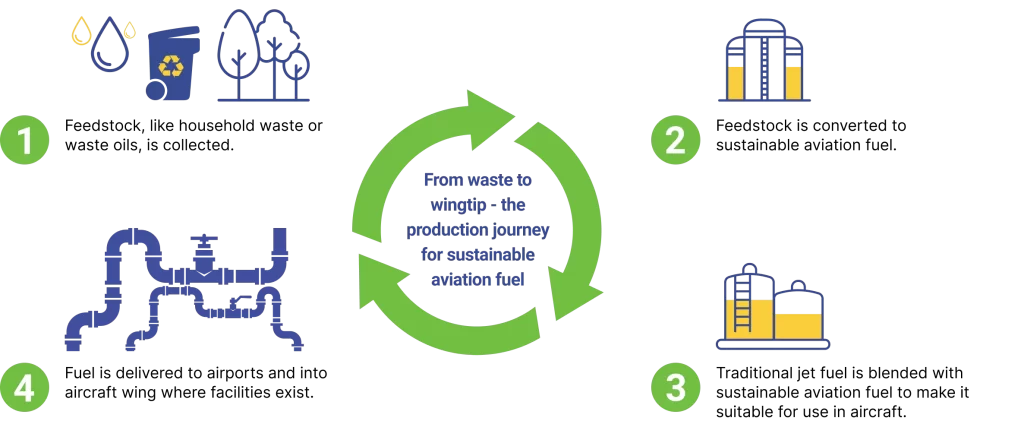Ryanair Sustainable Aviation Research Centre
Ryanair Sustainable Aviation Research Centre
Together we will:
- Determine the sustainability of SAF through analysing the amount of lifecycle greenhouse gases emitted throughout its production.
- Devise pre-screening tools for accelerated certification of early SAF candidates which will remove unnecessary regulatory barriers.
- Evaluate the feasibility of zero-carbon aircraft propulsion systems.
- Create a noise map for the minimal noise aircraft fleet.Create a noise map for the minimal noise aircraft fleet.
How is SAF made?
What is SAF and where does it come from?
SAF avoids the generation of new carbon emissions
from fossil fuels and minimises global warming.
Rather than being refined from petroleum, SAF is
produced from sustainable sources like waste oils (from biological origin), agricultural residues or
non-fossil CO2. SAF can reduce greenhouse gas emissions by
up to 80%.
SAF can be blended with fossil jet fuel and requires
no special infrastructure or changes to equipment.
Once blended, this fuel can be fully certified and
have the same specifications as that of fossil jet fuel.
Therefore, it is essential that we
understand which SAFs will genuinely reduce carbon emissions. Only
then can we have an effective
regulatory framework that ensures the production of SAF does not erode
or hamper the use of dedicated
cropland needed for food production.
Aviation is not the only industry that will want to introduce more sustainable fuels. We must think outside the box and remain inventive to keep costs low, reduce competition for SAF and ensure we opt to use a fuel that can clearly demonstrate significant greenhouse gas (GHG) reductions. SAF is a very useful way to reduce carbon emissions, we simply want to ensure it is as safe and sustainable as it can possibly be.
Fast Facts
Our goal is 12.5% SAF usage by 2030.

SAF is blended with jet fuel without the need for engine modification.

Ryanair and Trinity College Dublin Sustainable Aviation Research Centre launched in 2021.

Widespread use of SAF can reduce aviation greenhouse gas (GHG) emissions by up to 80%

*Sustainable Aviation Fuel (SAF) is the term for all aviation fuels that, unlike conventional aviation fuel, are produced without the use of fossil feedstocks such as crude oil, and also meet established sustainability criteria. The SAF used by Ryanair meets the requirements of the European Union’s Renewable Energy Directive II (RED II). Using SAF results in a reduction in carbon emissions compared to the traditional jet fuel it replaces over the lifecycle of the fuel. Emission reductions are predominately achieved during the production process and through the use of sustainable feedstocks. The emissions from its combustion in an aircraft engine are effectively the same as those of fossil fuels.


